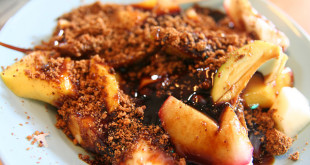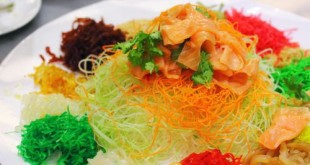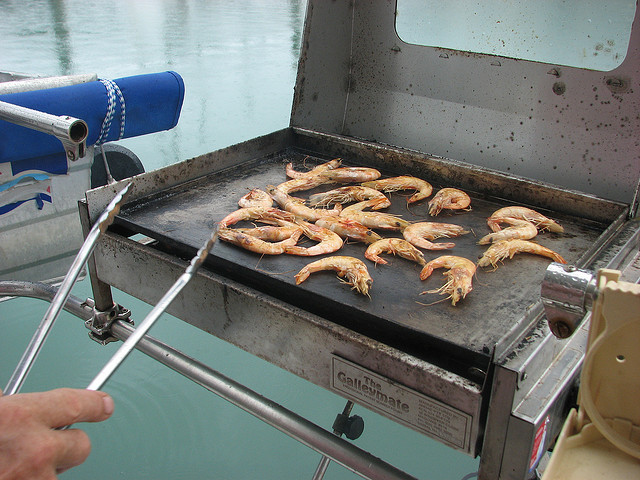Filipino cuisine is influenced by more than 300 years of Spanish colonization, and the country’s long-established trade relations with China before the arrival of Spaniards. In Southern Philippines, the choice of food is dictated by faith and nuanced by spices from neighboring countries.
Filipino dishes are also characterized by sometimes huge regional variation in preferences for taste and ingredients abundant in the area. Despite these differences, there are dishes that have become popular nationwide and represent the country’s collective taste buds.
These top 10 Filipino dishes to try provide a delicious introduction to the country’s multi-layered cultural heritage.
1. Adobo
Made mainly of chicken or pork, or chicken and pork, adobo is Mexican in origin (the Galleon trade during the Spanish era connected Manila and Acapulco, Mexico). Ask any Filipino their top three favorite dishes, and chances are, adobo makes it on the list. Meat was not an everyday item in the colonial past, so Filipinos of yore cooked it with vinegar, soy sauce, garlic, pepper and salt to make it last longer.
2. Lechon
Legend has it that lechon or roast pig (the entire pig!) was accidentally discovered in China when a man’s hut burned down to the ground, and along with it, his farm animals. Lechon is the traditional star of any Filipino table, especially during ‘fiestas’ (festivals) and important occasions like birthdays and ‘noche buena’ (Christmas dinner). It is spit-roasted over coals for hours. Lechon is best served immediately, with or without liver sauce, to get that crunchy, melt-in-the-mouth taste of crispy, golden brown skin. Lechon is ‘haram’ (forbidden) in Muslim Mindanao.
3. Bulalo
The Filipino version of beef stew, bulalo is a staple of Southern Luzon. Beef shanks and bone marrow (the bigger, the better) are cooked for hours so that fat melts into the broth and gives it a richer flavor. Bulalo is usually cooked with corn, Chinese cabbage, green beans, and potatoes. In Negros Occidental, the bare-bones, but no less delicious, version is called Cansi.
4. Inasal na Manok
Grilled chicken breast (pecho) and drumstick (paa). Before grilling the chicken parts, they are marinated in lemongrass, calamansi (small green fruit of citrus family), salt, pepper and garlic. To add more flavor, the chicken is brushed with annatto (also called achiote) seed oil. Chicken inasal is best eaten with garlic rice, or by itself with cold beer. The inasal of Bacolod City in Negros Occidental is famous nationwide. Pork inasal, prepared the same way, is also a national street food.
5. Sinigang
Sinigang is often fish or prawn stew, but could also be pork or beef, with tempered sourness (souring ingredient varies by region). Sinigang is more flavorful if cooked with watercress, string beans and taro root.
6. Laing
A specialty of the Bicol region, laing is taro leaves simmered in coconut milk. Bits of pork and lots of chili give laing more kick. The authentic versions are said to have come from Naga and Albay in Luzon.
7. Pinakbet
A vegetable dish of Ilocano (Northern Luzon) origin, pinakbet is simmered in water and shrimp or fish paste until the vegetables are shriveled. The Ilocano version reflects the hardy vegetables that are grown in the region: bitter gourd, eggplant, okra, string beans, tomatoes and chili peppers. The Tagalog (Manila and surrounds) version includes squash.
8. Bicol Express
Another recipe from Bicol made famous in Malate, Manila, this ultra-spicy dish is made of thinly sliced pork, jalapeno peppers and Baguio beans that are boiled in coconut milk and topped with coconut cream.
9. Chicken Curry
A favorite in ‘halal’ conscious Mindanao, chicken curry is reminiscent of Indian spices that are also abundant in Malaysia and Indonesia. From there, coriander, cumin, and turmeric have made their way to Southern Philippines. Chicken curry is prepared with boiling chicken, carrots and potatoes in coconut milk and curry powder. For more kick, chili is added while the sauce simmers, and the dish is topped with ground black pepper and fish sauce.
10. Sisig
A Pampanga (Northern Philippines) original, sisig is chopped pig ears, snout and jowls. It is prepared in three phases: The ‘maskara’ (pig mask) is first boiled to tenderize it, then broiled or grilled to remove hair. The ‘maskara’ is then chopped and sauteed in butter, garlic, onion and red pepper and seasoned with black pepper and brown sugar. A multitude of other variations has evolved since it was first experimented in mid-1970s, and may include ox brains, pork crackling, eggs, liver and mayonnaise. A dash of lemon juice adds more zing. However it is prepared, sisig tastes better if served on a sizzling plate!
But after all those delicious dishes, a visit to the Philippines is not complete without sampling balut. A street food, balut is truly an exotic Filipino food because no other country has ever thought of boiling duck embryo (at 15 to 17 days) and serving it with rock salt and coconut vinegar. Balut, sold in street corners or hawked by vendors all throughout the country, is not for the faint of heart as the sight of feathered duck fetus can ruin an appetite. But it’s worth a try if only for bragging rights!
Photos by fritish, smallislander, kitakitts, whologwhy, roboppy, roboppy, Chewy Chua, mmmyoso, jeffreyw and Squareh00r




